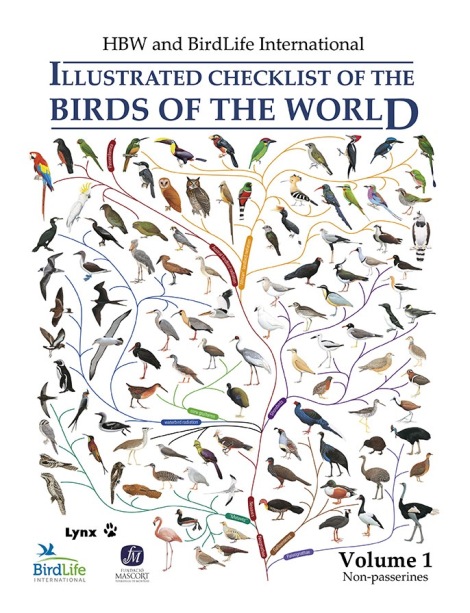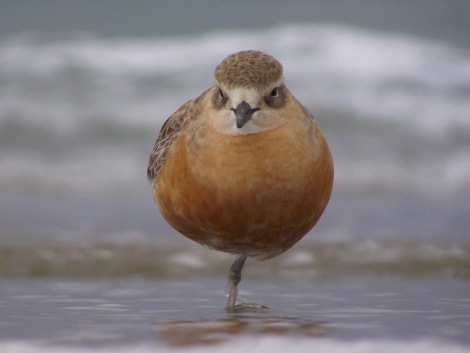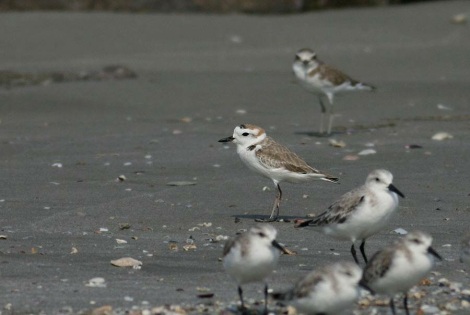 With the publishing of HBW and BirdLife International Illustrated Checklist of the Birds of the World. Volume 1 (Non-passerines) some interesting changes have been made in taxonomy of Charadriiformes, adopting a scoring system developed by Tobias et al. (2010). Despite genetic studies didn’t support relevant subspecies to be elevated to species level (e.g. Rheindt FE et al. 2011; Barth JMI et al. 2013), the new scoring system recognises four new shorebird species.
With the publishing of HBW and BirdLife International Illustrated Checklist of the Birds of the World. Volume 1 (Non-passerines) some interesting changes have been made in taxonomy of Charadriiformes, adopting a scoring system developed by Tobias et al. (2010). Despite genetic studies didn’t support relevant subspecies to be elevated to species level (e.g. Rheindt FE et al. 2011; Barth JMI et al. 2013), the new scoring system recognises four new shorebird species.
New Zealand Plover Charadrius obscurus has been split into Northern Red-breasted Plover Charadrius aquilonius and Southern Red-breasted Plover Charadrius obscurus. Both species are monotypic.

Southern and northern populations of New Zealand Plover (Dottere) have been treated as independent units. Courtesy of Wikimedia and licensed under the Creative Commons Attribution-Share Alike 3.0 Unported license.
Three-banded Plover Charadrius tricollaris has been split into African Three-banded Plover Charadrius tricollaris and Madagascar Three-banded Plover Charadrius bifrontatus. Both species are monotypic.
Kentish Plover Charadrius alexandrinus has been split into Kentish Plover Charadrius alexandrinus and White-faced Plover Charadrius dealbatus. Kentish Plover still remains polytypic, while White-faced Plover is monotypic.

The White-faced Plover Charadrius (alexandrinus) delbatus is an annual visitor to Lampakbia, Thailand. © Peter Ericsson
Masked Lapwing Vanellus miles has been split into Masked Lapwing Vanellus miles and Black-shouldered Lapwing Vanellus novaehollandiae. Both species are monotypic.
There might be some more splits (like Whimbrel, Willet, Red Knot or Dunlin) in the future based on this scoring system. From the handbook point of view, the IOC checklist is still the official taxonomic reference. Since the colour plates are focusing on subspecies level, including most of the the above listed (sub)species.
Thanks for Peter Ericsson (Thailand) for providing his photo for this post.

Hi Gyorgy,
I was drawn here after a post you left on the Bucksbirders yahoo group. I too have purchased the Illustrated Checklist, and see some changes which are hard to justify on genetic grounds alone.
I actually like the idea of using multiple characteristics (genetic, sonogram, behaviour, distinguishable visual differences etc) as a way of providing some sense of difference between “taxa”.
To me, the problem with using genetic difference / similarity is that I have seen reports of species being split into new species because they are x percent different in genetic make-up, whilst other species could be left unsplit because they are only x percent different in genetic make-up. There could be a consistency problem (and no, don’t ask me to quote examples!).
Furthermore, since human beings and gorillas are widely quotes as sharing 95% of DNA, we are talking small change in the amount of difference between any two living creatures. Without doubt, genetic studies are useful as part of the picture, and may mature to become the key component in identification, but I suspect that may take some time.
Jon Edwards